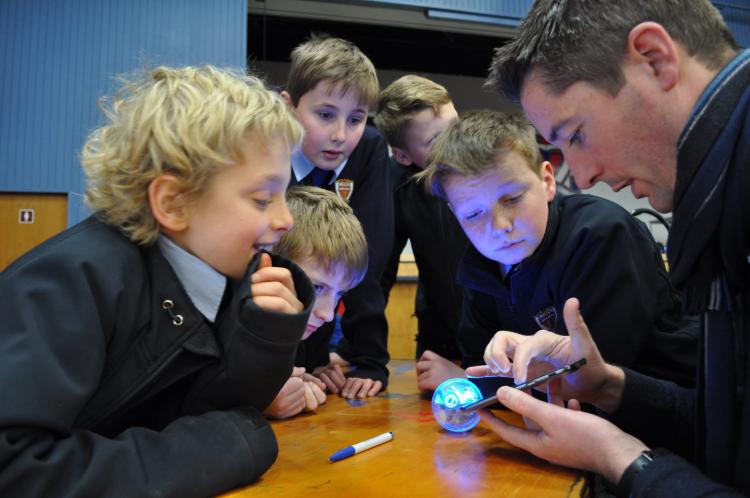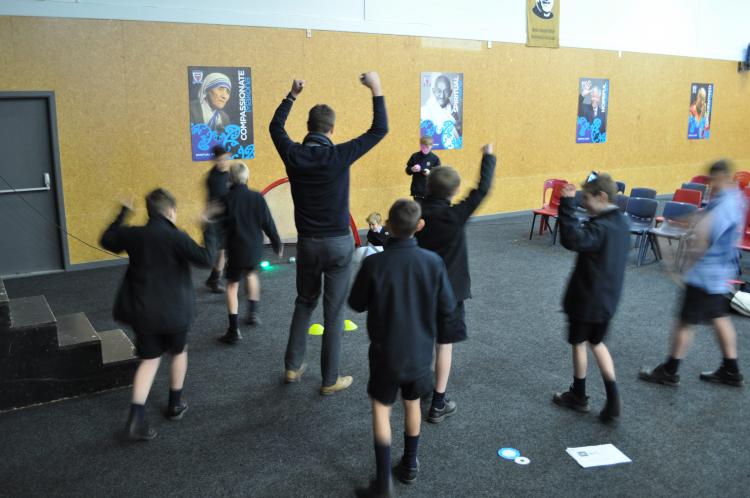Gamified learning sparks engagement revolution
Tags: Health and physical education | STEM/STEAM | Gamification tools | Minecraft | Primary | Upper primary |
Leaders at St Thomas of Canterbury College lift engagement by embedding gamification and agency into learning.
Since 2013, leaders at St Thomas of Canterbury College have worked to build motivation and excitement for learning among their middle school student community.
Looking to design a curriculum that would lift engagement across the college, they decided to trial a combined approach of gamification and learner agency to immerse the boys in learning.
"If kids have agency or choice, then that’s where we have engagement."
– Hamish Barclay (Assistant Principal, Head of Middle School)
The St Thomas team gamified learning by:
- introducing levelling up systems across units of work
- incorporating gameful approaches and mechanics into lessons, such as immersive role-playing, storytelling, and panic room and survival scenarios
- applying key concepts from STEM in gameful contexts, like building structures in Minecraft.
What is gamification?
Gamification involves turning the learning process, as a whole, into a game by applying game mechanics (such as player control, opportunities for mastery and levelling up, achievement badges) to it in order to motivate and engage learners. Failure is a source of feedback and learning, collaboration is necessary, and learning and assessment are tightly integrated.
More information »
The team has developed learner agency by:
- embedding choice into their gamified learning programmes
- enabling students to have choice in how they evidence their learning
- offering students some choice around which teacher-led lessons they will attend on a given day at school.
Gamification takes PE to the next level
In this year 7/8 kinesiology class, curriculum innovation leader, Brad Milne weaves gamification mechanics into a unit of learning around the Russia World Cup.
“Students just seem to be more positive and happy.”
– Brad Milne (Assistant Principal, Curriculum Innovation and Leadership)
By creating a levelling up system through the introduction of video game-style "player profiles," Brad offers students:
- a clear path towards mastery – students are able to make progressing up the levels "game-goals". They know exactly where they are in their learning, and what to do to achieve the next level.
- choice in learning – students can decide which skill to "power up" in a given lesson, giving them plenty of options within their learning. This in turn provides them with a sense that the choices they make could result in greater advancement.
- a self-assessment rubric that students will engage with – students can use the player profiles to see how far they've come and what to do to get ahead, giving them a greater feeling of achievement.
What does gamification look like?
In Brad's class, the levelling up mechanics guide activity. Crucially, this enables students to work at their own pace. They can keep working at a specific skill until it's been mastered, without worrying about what the other boys are doing. Evidence of learning is managed through Microsoft OneNote, which acts as a student-driven e-portfolio that Brad can monitor.
Learning resources
Unit materials containing the player profiles students use to track learning progress.
PDF containing examples of student ePortfolio in OneNote.
Document gathering thinking and research by St Thomas of Canterbury around gamification and engagement.
Microsoft OneNote
Microsoft's collaborative digital document and information sharing tool.
What the students think
For Brad's students, levelling up through the player profiles makes sense because it's a concept they're used to from video games.
Choice, agency, and gameful approaches are the key ingredients for engagement in STEM
To lift engagement in STEM, middle school leaders at St Thomas have:
- implemented gameful approaches of applying learning content from maths and science (such as building in Minecraft)
- broken down silos by doing projects combining content from maths, science, and technology
- made projects more hands-on
- combined classes and taught collaboratively
- given students choice around the teacher-led lessons they will attend on a given day at school.
"For us in STEM, when it comes to new ways of learning, all of the teachers realise that what they’ve done in the past isn’t engaging the boys, so we have to come with new ideas. Making it more relevant to the boys is always the first thing that we think of. So now we have to actually sell it to them."
– Tim Muir (Teacher in charge of STEM)
Applying learning in gameful contexts lifts engagement in STEM
Outcomes
Since bringing gamification elements and learner agency into their practice, teachers have seen evidence of:
- increased motivation among students – students have given consistently positive feedback on new modules of work and are more excited about their learning
- increased motivation among staff – teachers are excited about collaborating on new projects, taking risks on innovative approaches, and learning from each other
- improved outcomes for at-risk learners – students who struggled to perform in traditional modes of assessment like tests have thrived when able to express new knowledge in hands-on projects and gameful solutions.
"We’ve got reflections from the unit telling us they like this, and we make sure we develop it and model the next unit so we reach more kids, so you’re not just doing the same delivery style all the time."
– Hamish Barclay (Assistant Principal, Head of Middle School)

